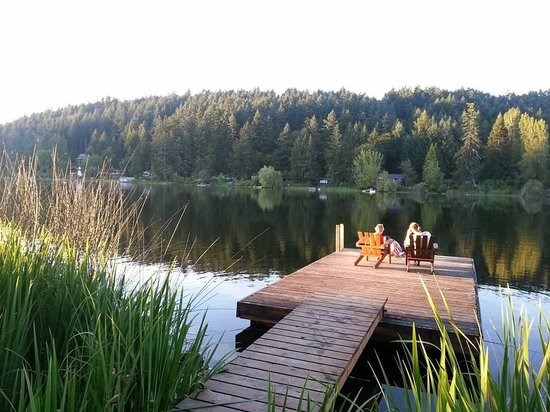The provincial. government has declared a level-3 drought for Vancouver Island, the Gulf Islands and northwest B.C.
The “very dry” drought rating triggers a requirement for voluntary reductions in water use.
Although we usually don’t see these conditions until late July or August, the announcement is no surprise. March was parched, April was neither better nor wetter, and the rain that fell in May didn’t make up for either. As well, early warm temperatures — in the high 20 C range in May, which is not normal — helped melt what little snowpack had accumulated over the winter.
The B.C. River Forecast Centre’s Snow Survey and Water Supply Bulletin listed the Island’s snowpack in early May as being below 60 per cent of normal. The average of all mountain snowpacks in B.C. was estimated to be 79 per cent of normal — among the lowest in the past 40 years.
Data from Environment and Climate Change Canada show that this spring has been one of the driest on record for Vancouver Island, and “significantly drier than normal” across the province.
Greater Victoria is somewhat better off than most of the island regions. The Sooke Reservoir remains above 90 per cent of capacity. The Capital Regional District implemented its level-1 water restrictions on May 1, as usual.
Residents of the Gulf Islands, however, should be concerned.
The islands have seen increasing pressure on its aquifers in the past decade because of an increase in year-round populations, tourism and water use. That, along with drier and hotter summers, has increased demand on limited groundwater supplies.
Aquifers are areas of groundwater that is held within tiny cracks and spaces in rocks or among sand and gravel. As people pull water out of the rock and sediments — whether for drinking, cooking, taking showers, doing laundry, watering crops or lawns — it must be replenished.
If it isn’t, the aquifers could run dry or, here on the West Coast, become contaminated. As freshwater is pulled out of an island aquifer and outward pressure within the aquifer declines, salt water can seep through the rock and sediments in the island’s underwater slope, replacing the fresh water. In a 2014 study of groundwater chemistry in the Gulf Islands region, researchers identified high salinities associated with mixing with salt water at depth in more than 100 wells across the islands.
Some of the larger Gulf Islands have above-ground lakes that allow fresh water to slowly seep into the surrounding and underlying rock to replenish aquifers throughout the year. Islands lacking large lakes rely entirely on seasonal rainfall to replenish groundwater supplies.
Without the drinking water the islands’ aquifers provide, idyllic island life would quickly become complicated and unpleasant.
Saturna Island residents can speak to this. With last year’s unusually dry weather, the island’s ground-water spring source — one of only two sources of drinking water on the island — dried up. Residents turned to the other source of water, the Money Lake Reservoir.
However, with the lake’s usual seasonal mixing of sediments and the warm fall weather that fed bacteria growth in the lake, water quality declined. The CRD implemented a boil-water advisory in mid-October.
It got so bad, B.C. Ferries delivered bottled water to the island in December.
Only after winter rains replenished the groundwater aquifer in early March was the advisory lifted.
Finite water supplies influence almost every aspect of Gulf Island life. It underpins, for example, Salt Spring Island’s housing shortage. Other issues also play a role, but at its core, an island’s drinking-water supply can support only so many people.
The Islands Trust, which came into being decades ago when a large development on North Pender Island threatened to overwhelm that island’s limited freshwater supply, is required to keep that in mind every time it reviews a business or development application.
The island communities have been encouraging residents to collect rainwater to relieve the pressure. Harvested rainwater can be stored to water gardens and flush toilets, keeping drinking water for, well, drinking and cooking. Other water re-use measures include collecting grey water from sinks to water lawns and gardens.
As summer rainfall decreases, temperatures rise and winter rains become less reliable, residents across the south coast may need to adopt such measures as common practice.



